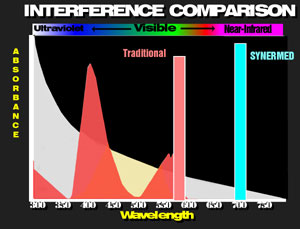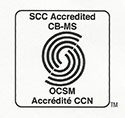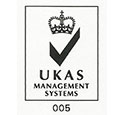Direct Bilirubin 700nm
 |
 |
 |
|
-
-
-
-
- Ready-to-Use Room-Temperature-Stable Mono Reagent
- Optimized for the Measurement of Conjugated Bilirubin
- in the Presence of High Levels of Unconjugated Bilirubin
- Minimal Chromatic Interference
- Free from Indican Interference
-
-
-
Principles of the Reaction
The Synermed® Direct Bilirubin Reagent measures the absorbance of an oxidation product of bilirubin at 700 nm. The absorbance of the cholecyanin oxidation product is directly proportional to bilirubin concentration.
Conjugated bilirubin is oxidized in the presence of the electron transfer agent, KHC3, to a blue-green infrared light absorbing chromophore. Unconjugated bilirubin is not significantly detected due to the fact that it is not soluble under the conditions of the direct reaction mixture and remains bound to albumin.
|
KC3 |
Unlike traditional diazo methods, there is no chemical interference from hemoglobin in the reaction and hemoglobin has no absorbance at 700 nm. Lipemia has very little absorbance at the 700 nm wavelength used for the detection. Urinary indicans form no color in the reaction and do not interfere.
Analytical Range
Most applications of the procedure have been found to be linear from 0 to 10 mg/dL(171 µmol/L) Direct bilirubin.
Limitations of the Procedure
- The interference from hemoglobin was tested using the application to the IR200 and no interference was noted up to levels of 1000 mg/dL hemoglobin.
- The interference from lipemia (tested as Intralipid) was determined using the application to the IR200 and no interference was noted up to levels of 1000 mg/dL lipemia.
- The interference from a hemoglobin based blood substitute was tested and no significant interference was observed up to levels of 1000 mg/dL.
- Urinary indican was tested at levels of 0.5 mM and 1.0 mM and no interference from indican was observed.
Expected Values
Bilirubin levels will vary with age, sex, and diet. It is strongly recommended that each laboratory establish an expected range for the local population. The normal range for direct bilirubin in serum is reported to be 0-0.3 mg/dL (0-5 µmol/L).
Special Performance Characteristics
- This Synermed Direct Bilirubin methodology was correlated to a commercially available method. The calculated linear regression on 40 samples ranging from approximately 0 to 7.5 mg/dL with Synermed results on the Y-axis was: Y = 0.96X - 0.09 mg/dL with a correlation coefficient of 0.993.
- The sensitivity of the procedure is such that an absorbance change of 0.001 will detect as little as 0.04 mg/dL when measured in a 1 cm light path.
- The within run precision of the method as applied to the Synermed IR200 analyzer was determined by assaying samples of quality control materials at two levels of direct bilirubin concentration yielding the following results:
Mean SD CV 0.5 mg/dL 0.04 6.8% 5.9 mg/dL 0.06 1.0% - The run to run reproducibility of the method as applied to the Synermed IR200 analyzer was determined from the values obtained by 5 replicate analyses of quality control material assayed over a 20 batch period over 5 days. The following results were obtained:
Mean SD CV 0.5 mg/dL 0.03 5.2% 6.0 mg/dL 0.06 1.1%
Connect with us
Certifications
 |
 |
 |
 |
||

